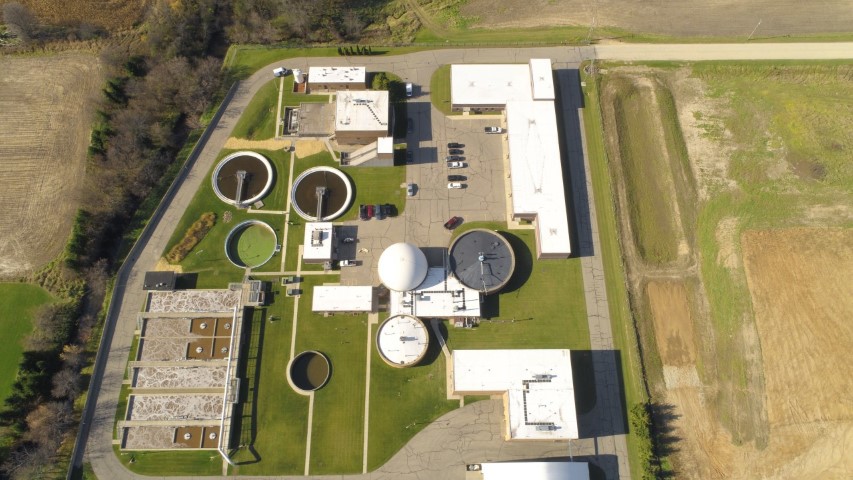Establishing a wastewater treatment plant maintenance schedule
Operation and Maintenance (O&M) at a Publicly Owned Treatment Work (POTW) is a constant battle against the forces of time and nature. The contaminants being treated can deteriorate reinforced concrete while turbulent flows and suspended solids can erode steel structures. This highlights the need for a regular wastewater treatment plant maintenance schedule that can restore treatment plant assets and recommend upgrades. But how can plant managers and superintendents know their maintenance plan is making the most effective use of resources and how should they measure its impact?
Below, we look into the benefits of scheduled wastewater treatment plant maintenance and how wastewater engineering experts can bring in new software, better data collection and innovative solutions to optimize your wastewater treatment plant maintenance plan.
Benefits of regular maintenance on a wastewater treatment plant
To optimize a wastewater treatment plant maintenance schedule, it is important to define how successful maintenance will benefit the facility. Here are two key benefits of scheduled maintenance:
Equipment lasts longer
Completely overhauling a wastewater treatment plant is expensive, and even partial replacements add up quickly. Breakdowns and emergency repairs are also costly and can shorten equipment lifespan. For POTWs operating on tight budgets, it is imperative to extend equipment life through continuous repair and rehabilitation solutions. Putting aside money for maintenance helps avoid high corrective maintenance costs. Longer equipment life and lower repair costs reduce operating expenses.
Minimizing downtime and outages
Unexpected equipment failures or power outages leading to downtime can prove to be a nightmare for POTWs. For example, a failure at a wastewater treatment plant could result in an emergency discharge of untreated wastewater to creeks, rivers and lakes. With a robust, data-driven maintenance plan in place, such crises can be averted by implementing upgrades and finding innovative solutions to wear and tear before things reach a crisis point. Less downtime and fewer outages increase plant productivity.
Beyond crisis response: Preventive and predictive infrastructure maintenance
All wastewater treatment plants have a program in place that goes beyond crisis response and corrective maintenance. However, even with a plan, regular maintenance can be a challenge because the plant must always comply with regulatory effluent limits. Facilities must find ways to perform maintenance without interrupting plant operations.
To establish a successful wastewater treatment plant maintenance schedule, facilities need to assess their preventive maintenance regularly. Many also choose to embrace predictive maintenance so they can get the most out of their equipment.
Preventive maintenance
Preventive maintenance works to minimize the risk that critical equipment, such as air release valves, aeration equipment, lift stations and headworks structures, will fail. Preventative maintenance can include:
- Completing regular oil changes.
- Adding lubrication and protective coatings to equipment.
- Inspecting to document any spalling, cracks or surface defects in concrete reinforcements or steel structures.
- Performing calibrations and adjustments.
- Cleaning regularly.
- Taking inventory of equipment (including lubricants) and spare parts.
- Planning maintenance according to manufacturer instructions.
Predictive maintenance
Predictive maintenance goes beyond standard prevention. To perform predictive maintenance, facilities collect data to determine equipment condition and prioritize repairs. Predictive maintenance data can come from:
- Historical data collection.
- IR camera inspection.
- Laser alignment.
- Vibration analysis.
- Airborne/structure-borne ultrasound.
- Motor circuit analysis.
- Oil analysis.
However, software is what truly makes predictive maintenance possible. Computer maintenance management systems store plant data and make it easy to format it properly for analysis. Much equipment also has built-in data collection software. Advanced analytics programs can take this data and use it to determine the best time to perform maintenance tasks. This makes it easier for wastewater treatment plants to prioritize and schedule repairs.
Get help setting up a wastewater treatment plant maintenance schedule
A wastewater treatment plant has a complex and interconnected network of equipment. POTWs typically operate with limited staff whose other duties leave little time for intensive data collection or puzzling out complex maintenance challenges. POTW facility managers and superintendents often lack the in-house expertise and equipment to optimize their wastewater treatment plant maintenance schedule cost-effectively. Outsourcing wastewater treatment plant maintenance to wastewater engineers is a feasible option to improve maintenance plans while keeping the plant up and running.
At Fehr Graham, we are a team of skilled professionals who are committed to improving wastewater treatment plant O&M across communities. Our expertise in wastewater engineering has helped POTWs address design and maintenance challenges with innovative solutions to improve the surrounding environment and the quality of life in the communities where our clients live and work.
Fehr Graham has provided POTWs with software-based preventative and predictive maintenance plans hosted by our servers. That means there is no fee for the POTW to use the software and plan. We will work with your facility and staff to develop a customized plan to ensure the equipment lasts longer, performs as designed and crises are prevented.
Fehr Graham is your one-stop solution for wastewater engineering. Contact us to learn how we can help you set up a wastewater treatment plant maintenance plan or give us a call at 217.352.7688
Collaborative, Insightful, Results-Driven Solutions
Fehr Graham provides innovative engineering and environmental solutions to help improve the lives and communities of our customers.


